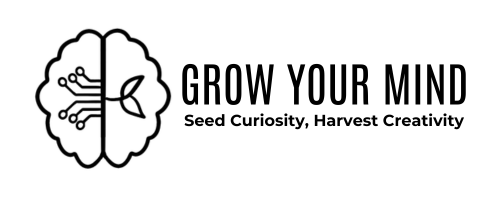Note: This article accurately outlines the key qualities of evergreen atomic notes as laid out by Andy Matuschak. It’s important to understand the basics and best practices. But overall, I recommend a more flexible form of note-taking.
Andy Matuschak based his system on Niklas Luhmann‘s slipbox, while introducing a few key differences.
The Characteristics of an Evergreen Atomic Note
There are four essential characteristics of a well-written evergreen note.
- Concept-Oriented: They capture the essence of an abstract idea.
- Write for Yourself: You should explain the concept in your own words.
- Associative Ontologies: You should organize your notes based on relationship.
- Atomic: They should contain one single idea.
Atomic notes have their own set of essential characteristics.
Single Idea or Concept: Avoid mixing different ideas.
Clear, Concise, and Complete: Use simple language to capture the concept comprehensively.
Densely Linked: Connect notes to form a web of information.
Clear, Brief Title: Use straightforward titles that are easy to link.
Now, let’s dive deeper into each of these aspects.
Evergreen Notes Last Forever
Evergreen notes are individual pieces of wisdom that stand the test of time. They capture the essence of what you learn and grow along with your knowledge.
They are building blocks that help you form original ideas while making the creation of content faster and more fun.
Keep reading to learn how to write effective evergreen notes.
Evergreen notes should be concept-oriented.
A concept is an abstract idea.
Beyond that definition, you’ll have to delve into an entire area of philosophy to land on what exactly a concept is. Read the wiki, and get a general grasp on the concept of a concept.
When you write evergreen notes, you should focus on capturing the essence of the idea rather than specific details or facts.
This way, you can use your notes to understand and apply those concepts to different situations and problems.
Evergreen notes should be written for yourself.
When you write evergreen notes, you should use your own words and examples to explain the concepts that you learn, as if you were teaching them to yourself.
This helps you remember and internalize what you’ve learned while making your notes your own.
This means you should:
- Avoid copying and pasting directly from sources
- Avoid using jargon or terminology that you don’t fully understand
- Include quotes sparingly
- Cite your sources
- Always add your own thoughts, insights, and interpretation of the information
Evergreen notes should be organized using associative ontologies.
Associative ontologies are flexible and emergent ways of categorizing your notes based on relationships.
You do this by linking your notes to other relevant notes using keywords or phrases that represent the relationship.
For example, you could use the phrase “poetry uses metaphor” to create a link between your atomic notes on poetry and metaphor. Then you would also include a link to the “poetry uses metaphor” note wherever that concept is relevant.
It’s best practice to use associative ontologies over hierarchical taxonomies, such as tags and folders. This is because hierarchal structures will often limit your ability to discover new connections and insights across your notes.
However, there are no hard and fast rules. Remember, the point of your mind garden, and each evergreen note, is to form original ideas!
Evergreen Notes Should Be Atomic
The final guideline for writing an evergreen note is also the most vital. Every evergreen note in your mind garden should be atomic.
Think of an atomic note as an individual unit of complete information.
Let’s explore the principles of writing effective atomic notes.
An atomic note represents a single idea or concept.
Each note should contain one single concept or idea. You should avoid mixing different concepts or levels of abstraction.
This makes your notes easier to understand, link, and locate.
Break the idea down until it’s no longer possible to dissect further.
An atomic note is as clear, concise, and complete as possible.
When writing a note you should aim to use simple and direct language to express your thoughts while avoiding jargon and details that aren’t absolutely necessary.
You should also capture the concept as concisely and completely as possible. Find the balance between including everything important and excluding everything that isn’t needed.
This is an art form that you can improve with practice.
By making your notes clear, concise, and complete, you will make them more readable and reusable.
It will also help you clarify your thinking and understanding of the concept.
Atomic notes should be densely linked.
You need to link your notes to other relevant notes to create a web of information that helps you form original ideas.
This means you should avoid leaving orphan notes, which are notes that are not connected to any other notes in your garden.
Orphan notes are essentially invisible.
If you can’t work the link into the writing, you can add it at the bottom of the note, especially if that note would otherwise be orphaned.
An atomic note should have a clear, brief title.
To make your notes easy to find and link, you should use a clear and brief title that summarizes the note’s content.
Avoid clever or vague titles that don’t convey the essence of your note.
This also helps you focus on maintaining one single concept per note.
I’ll just say it. Evergreen Atomic Notes are Awesome!
Similar to building blocks, atomic notes can be combined to create more complex ideas. Once your mind garden grows large enough, you’ll be able to create entire products in this way.
If you think of each note in your garden as a flower, you can pick and choose the notes (flowers) you need for a specific project, arrange them, add in some adornments such as intros, transitions, and conclusions, and create a beautiful bouquet.
This is the power and beauty of evergreen notes.
By taking care to write notes that are evergreen & atomic you can cultivate a creative ecosystem that grows and evolves with you.
Happy Mind Gardening! 😊🌿📝

